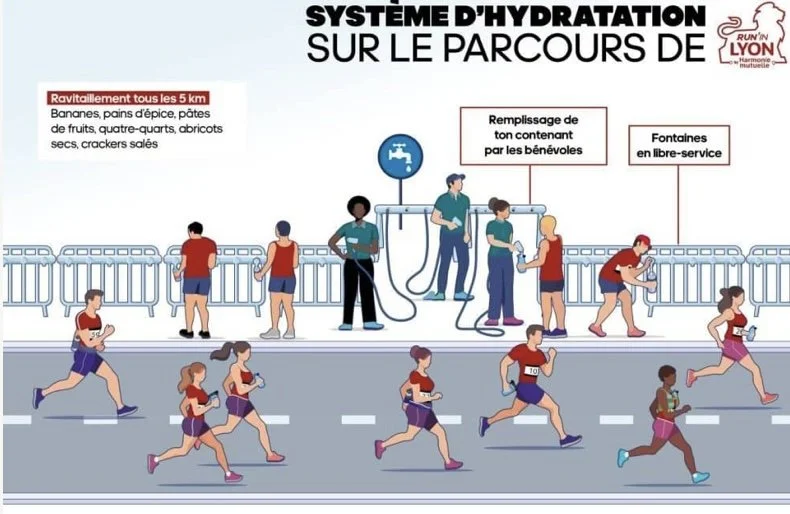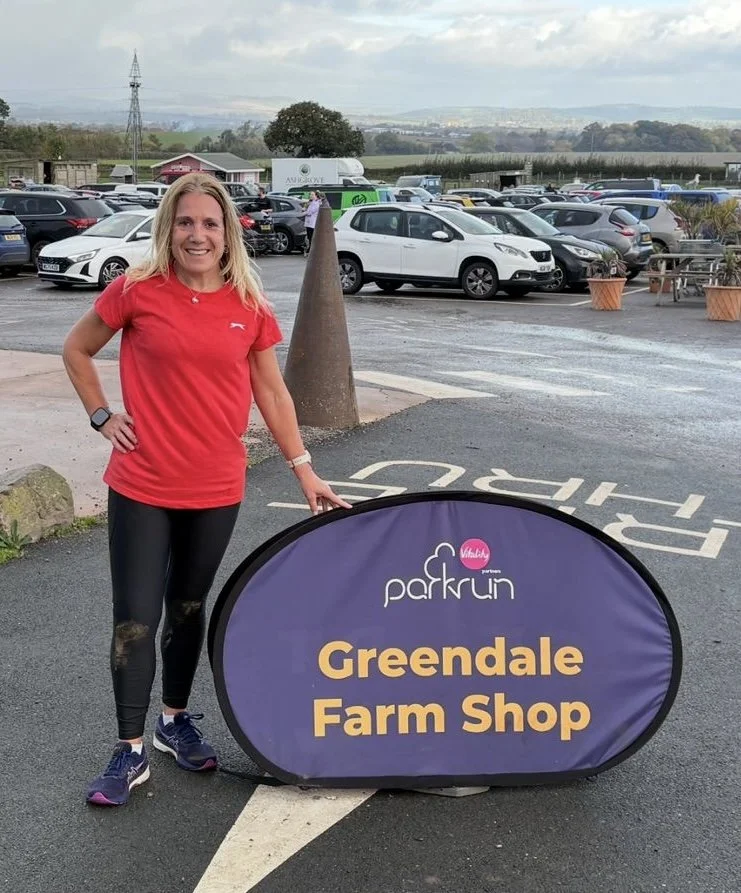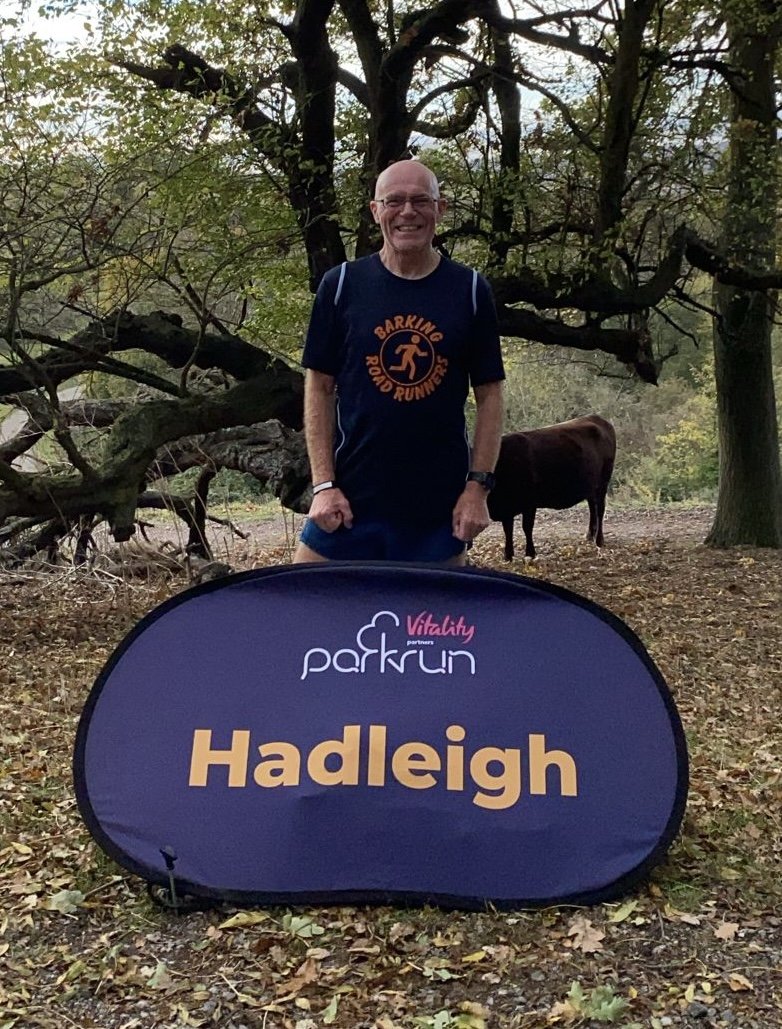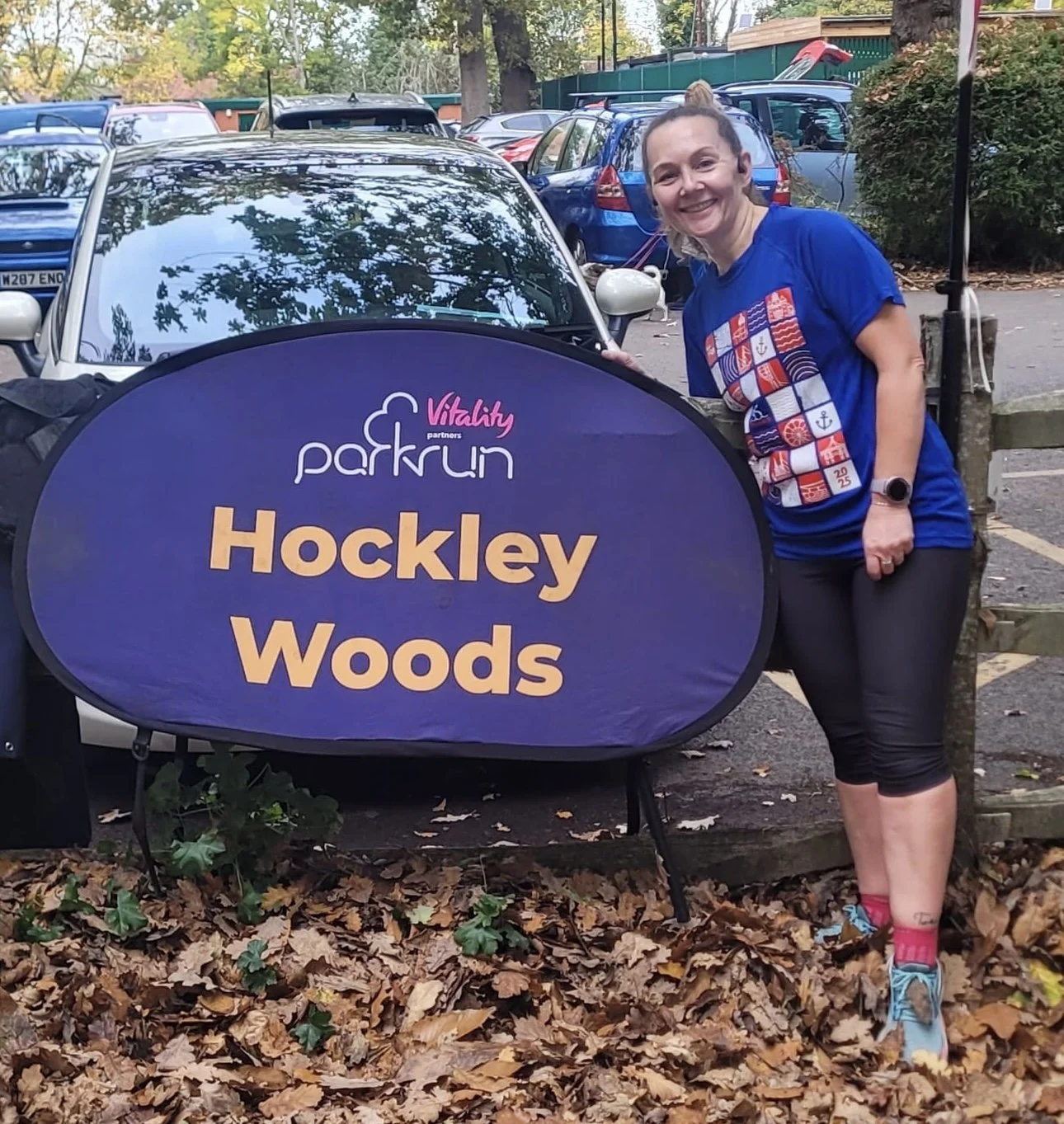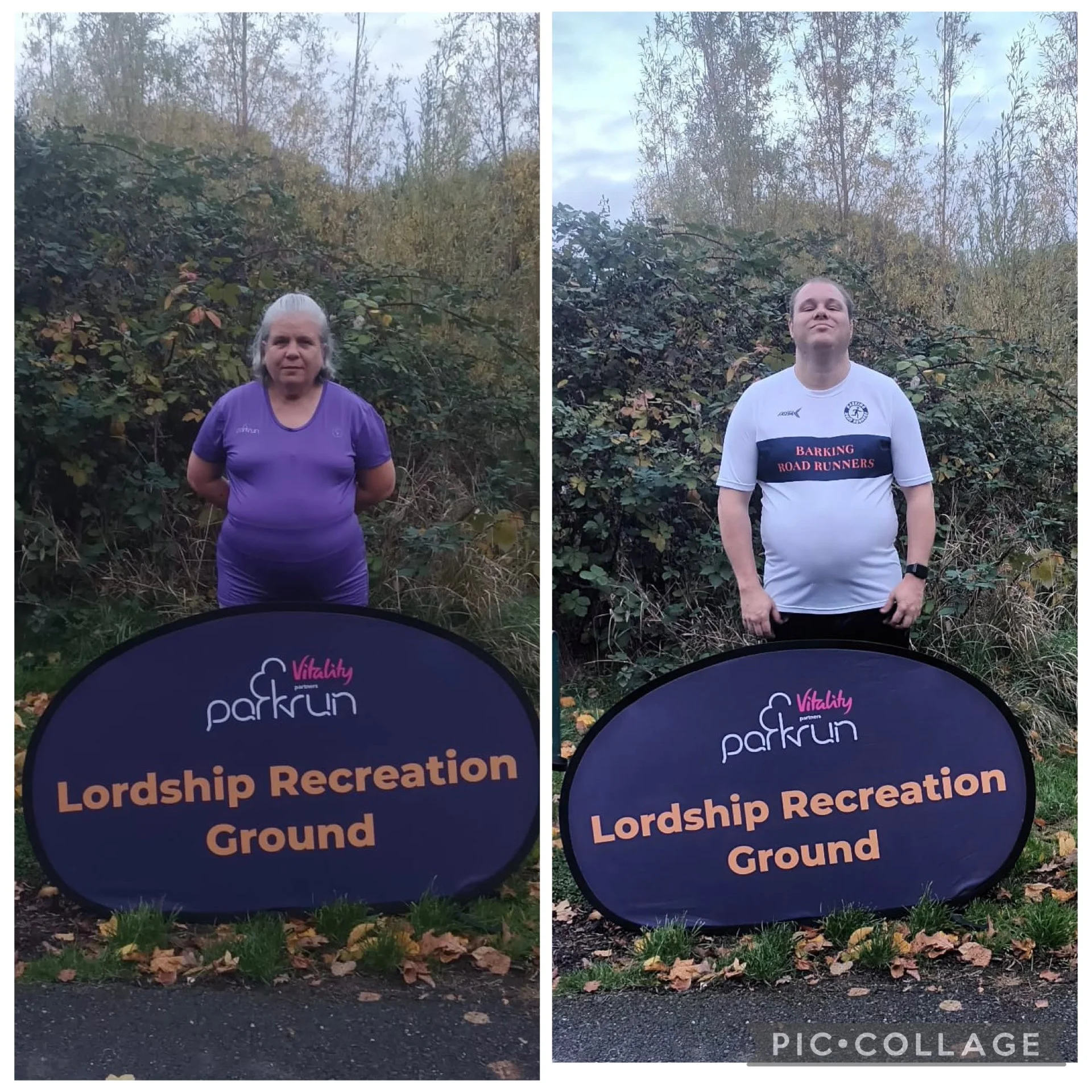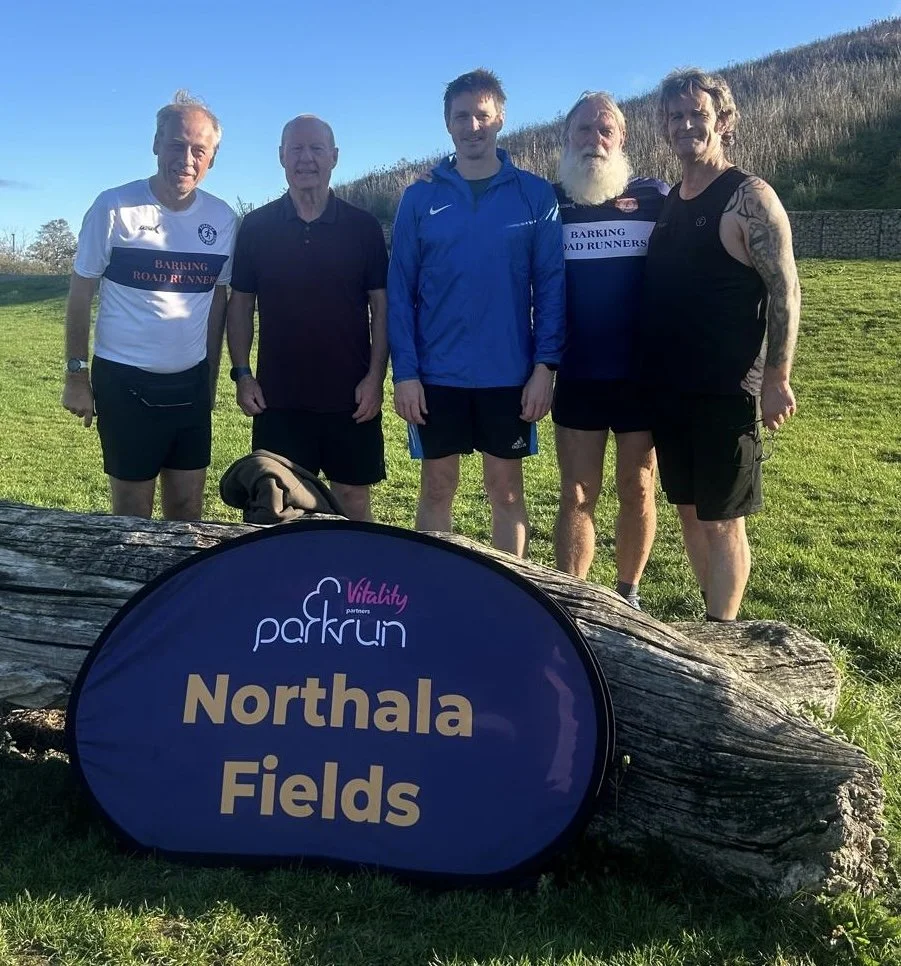BRR Blog - 27 October 2025
Rory after his fabulous performance at the Dublin Marathon
Howdie Road Runners!
Hope you all enjoyed your extra hour of sleep yesterday. It will be nice to see some extra daylight in the mornings although, with each day getting shorter by four minutes until 21 December, we won’t be benefiting from the lighter mornings for long.
There were no official club races this weekend, but we are making up for it with two races next weekend, at Eastbrookend on Saturday and Hadleigh on Sunday. In the meantime, Rory and Derv were doing a great job at the Dublin Marathon - details in Greg’s Race Report, below.
2025 BRR Annual General Meeting
Don’t forget it’s our 2025 AGM on Thursday night, at the Castle Green Centre/Jo Richardson School, Gale Street, Dagenham RM9 4UN. It’s 7.15pm arrival for a 7.30pm start . The AGM is where we look back at the past year, and look forward at key issues for the club in the year ahead. This year we have some important issues to discuss about the club structure and constitution, so it would be great if you could come along. We need at least ten per cent of the current first claim membership to be present for the meeting to be quorate (i.e. able to make decisions on behalf of the membership).
2025 Presentation Night
This year’s presentation night will take place on Friday, 5 December at The Three Travellers, 53 Althorne Way, Dagenham RM10 7DS (Wood Lane is the nearest main road). The pub, in a Grade II listed building, reopened in March this year after refurbishment, so it will be good to take a look inside. If you have won a trophy, do come along to collect it in person. Otherwise, just come along for a nice, social, evening with your fellow clubmates.
The Three Travellers - venue for the BRR 2025 Presentation Night
Remember, we have several competitions each year, including the Grand Prix, ELVIS, South Essex Cross Country League, Chingford League, and the Summer Handicap, where you have a chance of bagging a trophy for representing the club. The trophies are awarded for the highest placings over a number of races, but you don’t have to be the fastest runner to be in with a chance of winning - as you can see by the fact that I have won several trophies over the years!
Water, water everywhere?
The 2026 Paris Marathon is set to make history with a bold environmental initiative: eliminating all disposable water bottles and cups from its aid stations. Scheduled for 12 April 2026, the race will require its tens of thousands of participants to carry their own reusable hydration systems — such as soft flasks, collapsible cups, or hydration packs — throughout the 42.2 km course.
This move is part of a broader sustainability push by Amaury Sport Organisation (ASO), the event’s organiser, which has been phasing out single-use materials since 2017. After removing plastic bottles in 2024 and switching to paper cups, the 2026 edition will go fully reusable, assuming trials are successful . Aid stations will be redesigned with high-speed refill fountains and more frequent hydration points, spaced every 2 to 2.5 kilometres from the halfway mark.
An artist’s impression of the type of aid station to be used at the 2026 Paris Marathon
The change aims to drastically reduce waste and improve the race experience by eliminating the clutter and hazards of discarded containers. It also aligns with Paris’s city-wide ban on single-use plastics at sporting events, part of the Olympic legacy and a commitment to greener public initiatives.
While trail and ultra runners are familiar with self-hydration, this marks a significant shift for road marathons. The Paris Marathon’s pioneering approach could set a new standard for major races worldwide. We will have to wait and see what it means for our water station at mile 15 of the London Marathon.
Mafetone Magic?
Well done to Rory for completing his second Dublin Marathon on Sunday. In case you don’t know, this time Rory trained consistently using the heart rate training method, and it seems to have worked excellently for him.
Heart rate training for running was popularised by Dr. Phil Maffetone, whose approach is widely known as the Maximum Aerobic Function or MAF Method (which, coincidentally I’m sure, also matches the first three letters of his surname!).
Dr Maffetone
Dr. Maffetone developed this method in the 1980s to help endurance athletes train more effectively by focusing on low-intensity aerobic workouts guided by heart rate. His philosophy centres on the idea that building a strong aerobic base—by training at a heart rate below a calculated threshold (using his "180 Formula")—leads to better endurance, reduced injury risk, and improved overall health and performance.
What is the MAF Method?
The MAF Method focuses on training at a low heart rate to build a strong aerobic base. It emphasizes fat-burning efficiency, injury prevention, and long-term performance gains. The core idea is to train below a specific heart rate threshold to avoid overstressing the body and to improve endurance.
How It Works
Calculate your MAF heart rate
Use the 180 Formula:
180−your age=MAF heart rateAdjustments are made based on health and fitness history:
Subtract 5–10 bpm if recovering from illness or injury.
Add 5 bpm if you've been training consistently without issues.
Train at or below this heart rate
Most runs should be done at or below your MAF heart rate. This keeps you in the aerobic zone, where your body uses fat as fuel and builds endurance efficiently.Monitor progress with the MAF Test
Every few weeks, run a set distance (e.g. 3 miles) at your MAF heart rate and record your pace. As your aerobic fitness improves, your pace at the same heart rate should get faster.
Why It’s Effective for Marathon Training
Builds aerobic efficiency: Essential for sustaining effort over 26.2 miles.
Reduces Injury Risk: Low-intensity training is less taxing on joints and muscles.
Improves fat metabolism: Helps conserve glycogen stores during long runs.
Supports recovery: Easier runs mean quicker recovery and better consistency.
Promotes longevity: Encourages sustainable training habits over time.
MAF Marathon Training Plan Overview
Key Principles
MAF Heart Rate: Train at or below your calculated MAF heart rate (180 − age ± adjustments).
Run by Time, Not Pace: Focus on duration and heart rate, not speed.
MAF Test: Every 4 weeks, run 3–5 miles at MAF heart rate and record pace to track progress.
Recovery: Include rest days and optional cross-training (e.g., walking, cycling at MAF HR).
A to Z of Running
Episode eleven in the A-Z of running, and this week it is brought to you by the letter ‘K.’ KIndly take a look!
Kick: A burst of speed at the end of a race, often used in the final stretch to overtake competitors. Just don’t kick too early in a race, or your competitors might end up overtaking you!
🔥 Killer Intervals: slang for high-intensity interval training sessions that push your limits. Incorporate killer intervals once or twice a week. Example: 6 x 800m at 5K pace with 90 seconds rest. These boost speed and endurance.
📏 Kilometre (km): a metric unit of distance; commonly used in race formats like 5K, 10K, etc. One kilometre is equivalent to 0.6213711922 miles.
K-Rep (Kilometre Repeat): A training workout involving repeated runs of 1k at a set pace, with recovery intervals in between. They can help to build speed, endurance, and pacing discipline. Here are some example workouts by race goal:
For 5K Training:
6 × 1 km at 5K pace with 90 sec jog recoveryFor 10K Training:
5 × 1 km at 10K pace with 60 sec jog recoveryFor Half Marathon Training:
4 × 1 km at half marathon pace with 60 sec recovery
🏃♂️ Kinesiology: the scientific study of human movement, focusing on biomechanics, anatomy, and physiology. Understanding kinesiology can help you refine your running form, reduce injury risk, and improve performance.
🩹 K-tape (Kinesiology Tape): elastic therapeutic tape used to support muscles and joints without restricting movement. K-tape is applied to areas prone to strain (e.g., knees, calves) before long runs or races. Seek guidance from a physio for correct application (or just stick it everywhere and hope for the best, like I do!).
🦵 Knee Drive: the upward motion of the knee during a running stride, important for efficient and powerful running form. This is why we practice high knees in our drills at track.
🦵 Knee Extension: the movement that straightens the leg at the knee joint, increasing the angle between the thigh and the lower leg. This action is primarily performed by the quadriceps femoris muscle group, located at the front of the thigh.
🦵 Knee Flexion: bending of the knee joint, decreasing the angle between the thigh and the lower leg. This movement is primarily controlled by the hamstring muscles, located at the back of the thigh.
🦵 Knee Pain: A common running injury, often caused by overuse, poor form, or conditions like runner’s knee, IT band syndrome, or more chronic issues such as arthritis.
👟 Kicks: an informal term for running shoes, more common in the US than the UK. Use between different types of kicks for different terrains e.g. cushioned for long runs, trail shoes for off-road. Replace them when they become worn to avoid injury.
🏔️ KOM (King of the Mountain): a title awarded to the fastest runner on a specific hill or trail segment on platforms like Strava. Or a song by Kate Bush…
Greg’s Race Report
Barking Road Runners members Derv Bartlett and Rory Burr ran in the Dublin Marathon at the weekend. Derv finishing in a very good time of 3:23:45 whilst Rory finished in 4:25:24 comfortably beating his previous time at this event.
Derv during the Dublin Marathon
BRR parkrunners
Barking - Stuart Mackay 20:53, Jess Collett 22:57, Mark New 23:52, Cristina Cooper 24:57, Rosie Fforde 26:23, Jason Li 27:24, Chris Muthaka 27:36, Sian Mansley 29:15, George Hiller 29:19, Lizzie Beth Garaghan 29:56, Nikki Cranmer 30:01, Martin Mason 33:41, Astrid Effindi 41:56, Les Jay 45:41 and Alan Murphy 51:02.
Chalkwell Beach - Richard Dudman 30:25.
Fairview - Rory Burr 27:15 and Stuart Burr 27:58.
Rory and Stuart at Fairview parkrun
Great Dunnow - Gary Harford 29:11.
Greendale Farm Shop - Belinda Riches 27:37.
Belinda at Greendale Farm Shop parkrun
Hadleigh - Ron Vialls 27:42.
Ron Vialls and friend at Hadleigh parkrun
Hockley Woods - Louise Chappell 32:54.
Louise at Hockley Woods parkrun
Lordship Recreation Ground - Darren Graham 43:47 and Denise Graham 55:51.
Denise and Darren at Lordship Recreation Ground parkrun
Northala Fields - John Mitchell 23:44, Barry Rowell 28:42, Rob Courtier 31:37, Steve Colloff 32:58, and Dennis Spencer Perkins 35:10.
Barry, Rob, John, Dennis and Steve at Northala Fields parkrun
Raphaels - Faye Spooner 37:10.
Roding Valley - Paul Withyman 20:55.
Southwark - Tom Shorey 26:20 and Clodagh Shorey 32:56.
Valentines - Chandru Thayalan 25:06, Kevin Wotton 25:46, and Andrew Gwilliam 55:21.
Highest BRR age gradings were Jess Collet 67.54% for the women and Stuart Mackay 70.07% for the men.
BRR Diary – October/November
The highlights of the coming weeks are listed below but you can see the full diary of BRR events on the TeamUp app. Simply download the TeamUp app to your phone, then enter the calendar key: ks67p21gt8p5gzdo66 when prompted. If you don’t want another app on your phone, you can also find it under the ‘events’ tab on the Barking Road Runners website: https://www.barkingroadrunners.org.uk/calendar.
7.00pm, Tuesday 28 October - speed session. Jim Peters Stadium, Mayesbrook Park. This week Jess will be taking the session, and it’s Snakes & Ladders:
1 min run, 1 min rec
Then 3x
3 mins run, 2 mins rec
2 mins run, 90 secs rec
1 min run, 90 sec rec
7.15pm, Thursday 30 October - Club Annual General Meeting (AGM) 2025. Castle Green Centre/Jo Richardson School, Gale Street, Dagenham. Preceded by a short run starting at 6.00pm, led by Rob.
11.00am, Saturday 1 November - Eastbrookend Country Park (Chingford League 02). Discovery Centre, Eastbrookend Country Park, The Chase, Romford, RM7 0SS. Second race in the Chingford League series. A nice, beginner-level, cross-country race of about five miles. This race is organised by BRR, so we will need to field a team but also have lots of volunteers. Volunteers needed at 9.15am, ready for the junior races at 10.15am.
10.00am, Sunday 2 November - Hadleigh Country Park (South Essex Cross Country League 01). Hadleigh Country Park, Chapel Lane, Hadleigh, Benfleet SS7 2PP. Expect hills and mud! Entry is normally £5 but BRR subsidises the cost for its members so you only pay £3. No bib number needed but you must wear a club top.
9.30am, Sunday 9 November - Orienteering Event. Hainault Country Park, Fox Burrow Rd, Hainault IG7 4QL. Meet at the car park near the Global Cafe for a new an exciting challenge, organised by Greg.
2.00pm, Sunday 23 November. Barking versus the Builders Rematch. Astroturf Football Pitch, South Park Drive. This time our boys mean business!
Cracker Corner
Chris was complaining about feeling cold in our house. I told him to stand in the corner; it’s always 90 degrees there.
I have opened a hotel for insects. It’s a bee and bee.
Have you heard the rumour about butter? Never mind, I shouldn’t be spreading it.
Quote of the Week
“Success at anything will always come down to this: Focus and effort, and we control both.”
Dwayne Johnson
And finally…
I’ve been suffering with pain in my Achilles for the last few weeks, but how did this pesky tendon at the back of the ankle, the bane of all sportspeople, come to be named after a figure from Greek mythology?
Legend has it that Achilles was a powerful warrior and hero of the Trojan War, known for his near invincibility (a genuine legend!). According to myth, his mother Thetis dipped him in the River Styx to make him immortal, holding him by his heel. This left his heel untouched by the magical waters, making it his only vulnerable spot.
Achilles fought bravely in the Trojan War but was ultimately killed when Trojan rival Paris, aided by the god Apollo, shot an arrow into his heel. This small weakness led to his death, despite his otherwise unmatched strength and skill.
The term “Achilles’ heel” has since become a metaphor for a person’s point of greatest vulnerability, especially when it contrasts with overall strength. So, in theory, any relatively weak part of your body could be your own, personal, Achilles heel…


